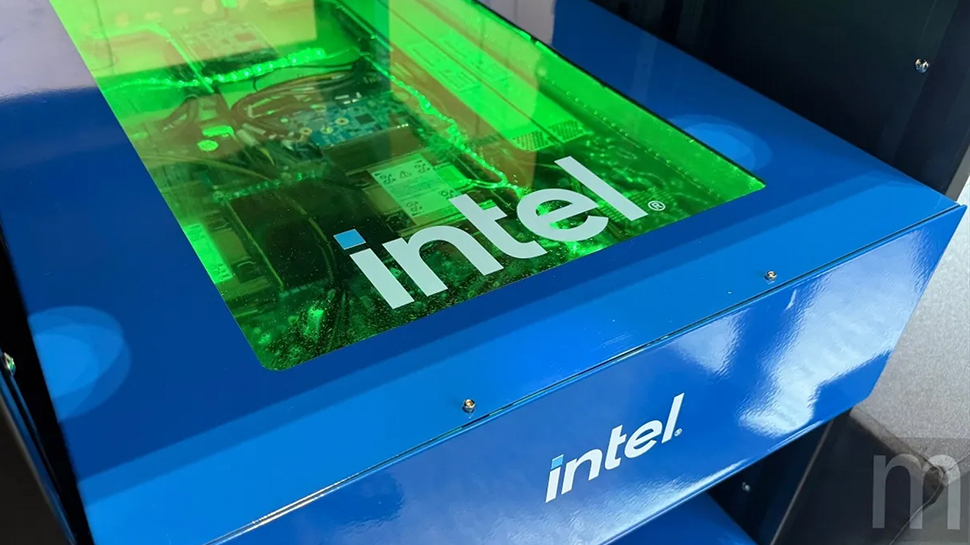Intel could be key to Nvidia's future plans for megawatt-class rack servers as it pushes ahead with Superfluid cooling
Intel has been showing off its liquid cooling products in Taiwan

- Intel expands its liquid cooling tech to support Nvidia’s future AI chips
- Superfluid cooling tackles 1.5kW heat loads for high-performance systems
- Taiwan partnerships position Intel as cooling leader for next-gen chips
It's no secret that Intel, which recently appointed Lip-Bu Tan as its new CEO, is facing difficult times.
The iconic chipmaker is reportedly considering spinning off its foundry division into a joint venture with TSMC in a bid to turn things around, but separate from those plans, Intel is also looking to change its fortunes by becoming a major player in cooling next-generation AI hardware.
The company’s Superfluid cooling solution is reportedly capable of managing heat output up to 1.5kW per chip, a level of performance that could be essential for cooling Nvidia’s GB300 superchip and also for upcoming rack servers, like those shown off at GTC 2025.
Blowing bubbles
At its event, Nvidia unveiled mock-ups of Kyber-based NVL576 racks featuring Rubin Ultra GPUs.
According to Nvidia's co-founder, president, and CEO Jensen Huang, these systems could draw as much as 600kW, with future racks potentially reaching megawatt-level power demands. As energy requirements grow, advanced cooling solutions like Intel’s Superfluid technology will become increasingly essential.
Superfluid cooling was first introduced by Intel in 2023 and uses microbubble injection to improve coolant flow and heat transfer efficiency.
mashdigi reports the technology draws inspiration from a method used by Mitsubishi Heavy Industries, “where bubbles are generated under the hull of ocean-going ships to reduce water resistance and improve propulsion efficiency."
Are you a pro? Subscribe to our newsletter
Sign up to the TechRadar Pro newsletter to get all the top news, opinion, features and guidance your business needs to succeed!
The site goes on to explain that in the case of Superfluid cooling, "a similar approach is applied by generating bubbles in the coolant to increase flow speed and enhance heat removal. This is combined with cold plate designs to further improve thermal conductivity.
Additionally, the system uses a new type of non-conductive dielectric fluid to prevent damage to submerged servers in the event of a leak.” This approach makes it highly suitable for dense compute environments where traditional cooling methods fall short.
Intel recently showcased its progress at the 2025 Superfluid Advanced Cooling Technology Forum in Taiwan, co-hosted with the Industrial Technology Research Institute.
According to United Daily News Network (UDN), the event drew over 500 attendees and more than ten local suppliers, highlighting strong industry interest. Taiwanese firms, including Maico, YuanShan, Kuenling, and Sun Max Tech, presented hardware built to support Intel’s cooling system, including server racks, liquid-cooled chassis and thermal components.
Intel is reportedly also investing in advanced materials to reduce corrosion and mechanical wear, including liquid metal-based designs and electromagnetic pump systems, in order to improve long-term durability and reduce maintenance for large-scale deployments.
You might also like

Wayne Williams is a freelancer writing news for TechRadar Pro. He has been writing about computers, technology, and the web for 30 years. In that time he wrote for most of the UK’s PC magazines, and launched, edited and published a number of them too.
You must confirm your public display name before commenting
Please logout and then login again, you will then be prompted to enter your display name.